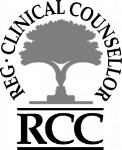Other Neurofeedback Research
Schizophrenia and the Efficacy of qEEG-Guided Neurofeedback Treatment: A Clinical Case Series
Abstract
Schizophrenia is sometimes considered one of the most devastating of mental illnesses because its onset is early in a patient's life and its symptoms can be destructive to the patient, the family, and friends. Schizophrenia affects 1 in 100 people at some point during their lives, and while there is no cure, it is treatable with antipsychotic medications. According to the Clinical Antipsychotic Trials for Interventions Effectiveness (CATIE), about 74% of the patients who have discontinued the first medication prescribed within a year will have a relapse afterward. This shows an enormous need for developing better treatment methods and better ways to manage the disease, since current therapies do not have sufficient impact on negative symptoms, cognitive dysfunction, and compliance to treatment. In this clinical case series, we investigate the efficacy of quantitative electroencephalography (qEEG)-guided neurofeedback (NF) treatment in this population, and whether this method has an effect on concurrent medical treatment and on the patients. Fifty-one participants (25 males and 26 females) ranging from 17 to 54 years of age (mean: 28.82 years and SD: 7.94 years) were included. Signed consent was received from all patients. Most of the participants were previously diagnosed with chronic schizophrenia, and their symptoms did not improve with medication. All 51 patients were evaluated using qEEG, which was recorded at baseline and following treatment. Before recording the qEEG, participants were washed out for up to 7 half-lives of the medication. After Food and Drug Administration (FDA)-approved Nx-Link Neurometric analysis, qEEGs suggested a diagnosis of chronic schizophrenia for all participants. This was consistent with the clinical judgment of the authors. The participants' symptoms were assessed by means of the Positive and Negative Syndrome Scale (PANSS). Besides the PANSS, 33 out of 51 participants were also evaluated by the Minnesota Multiphasic Personality Inventory (MMPI) and the Test of Variables of Attention (TOVA), both at baseline and following treatment. Each participant was prescribed an NF treatment protocol based on the results of their qEEG neurometric analysis. Each session was 60 minutes in duration, with 1 to 2 sessions per day. When 2 sessions were administered during a single day, a 30-minute rest was given between the sessions. Changes in the PANSS, MMPI, and TOVA were analyzed to evaluate the effectiveness of NF treatment. The mean number of sessions completed by the participants was 58.5 sessions within 24 to 91 days. Three dropped out of treatment between 30 and 40 sessions of NF, and one did not show any response. Of the remaining 48 participants 47 showed clinical improvement after NF treatment, based on changes in their PANSS scores. The participants who were able to take the MMPI and the TOVA showed significant improvements in these measures as well. Forty were followed up for more than 22 months, 2 for 1 year, 1 for 9 months, and 3 for between 1 and 3 months after completion of NF. Overall NF was shown to be effective. This study provides the first evidence for positive effects of NF in schizophrenia.


